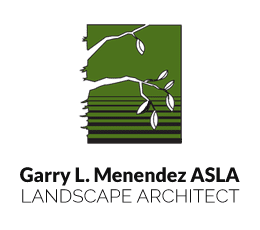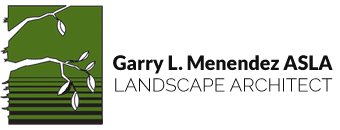Hardscape & Softscape Features in Sustainable Landscape Design
The ideal garden in sustainable landscape design combines organic material such as flower beds with inorganic ones such as stone or concrete. When gardeners combine hardscape and softscape features, they can create intricate design patterns and beautiful contrasts and influence water distribution, irrigation and soil quality.
Hardscapes vs Softscapes in Sustainable Landscape Design
Hardscapes can direct foot traffic, such as stone pathways, or serve as furniture or a boundary, such as a wooden bench or fence. We construct hardscapes with solid and typically permanent material that’s usually inorganic, although it can be organic.
Examples of hardscapes include:
- Benches
- Driveways
- Birdhouses
- Gazebos
- Fences
- Fountains
- Pools
- Patios
- Playgrounds
- Walkways
A softscape, on the other hand, is generally made up of more delicate, more malleable materials that are typically organic. Softscapes facilitate plant growth, showcase native plants even, and make a standout outdoor living space, overall.
Examples of softscapes include:
- Shrubs
- Flowers and flowerbeds
- Grasses
- Gravel
- Vines
- Plants & trees
- Soil and sod
- Stones and rocks
- Trees
- Vegetables/fruits
With that said, here are a few concepts that give you insight as to how I approach the combination of these elements together.
How to Incorporate Hardscape & Softscape Features into a Sustainable Garden Design
Ultimately, combining hardscape and softscape features can be an artistic endeavor of sorts. There are no hard-and-fast rules to the design and installation. Regardless of my direction, I follow a few guidelines for every project because they always allow me to combine the best hard and soft elements.
Principles of Landscape Architecture and Design
Line, form, texture, color and weight are five landscaping design principles to create an ideal outdoor space. These principles form the basis of any landscape design project. I look deeply at a client’s current landscape, and I think about these five principles to guide my creative process.
I’ll consider forms and shapes that will naturally fit within that landscape’s confines and how they will look with each other, both from a spatial and functional perspective. I will also look at natural fits, combining denser materials with lighter ones and so forth. Of course, color comes into play.
Finally, I think about visual scale to create unique patterns that are pleasing to the eye. My goal is to take a client’s vision and mold it with my insights and expertise so that we both reach a happy medium.
Landscape Settings & Environment
Combining hardscape and softscape features involves more than creating an artistic canvas, of course. It’s often an endeavor in creating a sustainable and functional landscape that benefits both the homeowner and the environment. I’m always striving to combine complementary features so that there are no scenarios where environmental or structural damage can occur.
I look at how certain hardscape features affect a property’s water irrigation, how weather and climate patterns may affect soil quality.
I even consider how certain features will affect the homeowner, whether it means a potential safety hazard or the need for added maintenance. My goal is to see clients build a landscape they can manage and enjoy visually, any time of the year.
Client Budget & ROI to Sustainable Landscape Design
Last but not least, there is the inevitable factor of budget. Many clients are very realistic in their creative vision and what they would like for their dream landscape. However, their budget might not permit it.
I’m very conscious of a client’s budget, and I let them know immediately whether their vision is suitable for their financial goals or not. With that said, I always look for alternatives that might be the next best choice if a particular hardscape or softscape feature is unaffordable.
Now here’s one thing that I can personally say that separates me from other landscape architects. I always look at the long-term gains that a homeowner can acquire by incorporating certain hardscape and softscape features. I ask myself whether the client will have to replace a component just once or annually. Or if they combine certain elements, I’ll ask myself whether it will subtract or add to the curb appeal of their home?
Ultimately, if a landscape looks attractive now but burdens the homeowner later, then it may not be worth building at all.
Hardscape & Softscape Combinations I Have Worked On
Over the years, I have accumulated quite a few hardscape and softscape projects under my belt. Take a look below:
With that said, if you look at some pics I’ve posted on my portfolio page, you’ll get a glimpse of what I mean. You’ll probably notice that some of these landscapes have certain similarities with each other, so I do have a “style,” so to speak.
Bringing the Mix Together in Tennessee Landscape Design
Are you planning to build or create a new landscape design for your home? If so, I strongly recommend considering the incorporation of both hard and soft landscape features.
Aesthetically, combining solid material with a more malleable one creates exciting textures, patterns, which can be a visual joy. More importantly, combining these elements benefits you as a homeowner since it allows for easier maintenance and management of your landscape.






